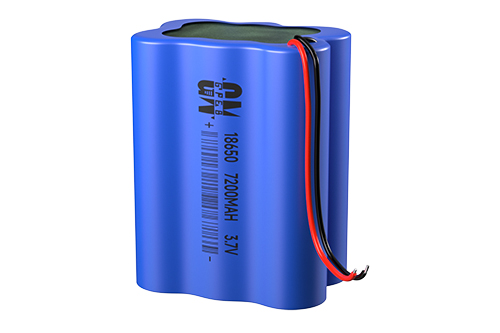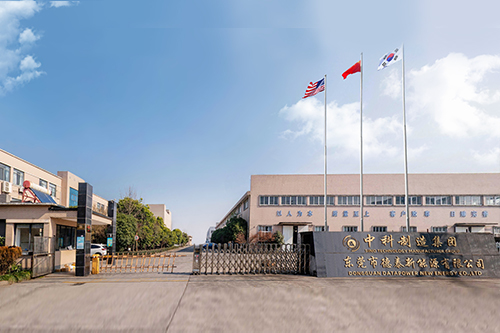
Recently, Jiang Liwei, a doctoral student in Group E01 of the Clean Energy
Key Laboratory of the Institute of Physics, Chinese Academy of Sciences/Beijing
National Research Center for Condensed Matter Physics, successfully constructed
an aqueous potassium-ion full battery under the guidance of researcher Hu
Yongsheng and associate researcher Lu Yaxiang, proposing to use Fe
Manganese-rich potassium-based Prussian blue KxFeyMn1-y[Fe(CN)6]w·zH2O, which
partially replaces Mn, is the positive electrode, and the organic dye perylene
brilliant purple red 29 (PTCDI) (CAS: 81-33-4) is the negative electrode, 22
mol/L The aqueous solution of potassium trifluoromethanesulfonate is the
electrolyte. The research results were recently published in Nature Energy
(Nature Energy, 2019, doi:10.1038/s41560-019-0388-0), and the article is titled
Building Aqueous K-Ion Batteries for Energy Storage. Aqueous alkali metal ion
(Li+/Na+/K+) batteries have become one of the emerging candidate systems for
grid energy storage due to their inherent safety. Among aqueous alkali metal ion
batteries, aqueous potassium ion batteries have more prominent advantages. The
main reasons are: first, the content of potassium in the earth's crust is 1290
times that of lithium, which has a great cost advantage; second, the standard
electrode of potassium The potential is 0.22V lower than that of sodium, which
means that the potassium cathode of the same type of structure has a higher
voltage, resulting in a higher energy density for the full battery; thirdly, in
an aqueous solution with the same anions and the same concentration, the
potassium salt solution The ionic conductivity of lithium salt is much higher
than that of lithium salt and sodium salt, which means that using potassium salt
solution as electrolyte can make the full battery have faster charge and
discharge capabilities. However, due to the dissolution phenomenon of many
electrode materials in water and the narrow voltage window of traditional
aqueous electrolytes (less than 2V), the choice of electrode materials in
aqueous batteries is greatly limited. Therefore, exploring high-performance
potassium-based positive electrodes, negative electrodes, and wide voltage
window electrolytes has become a core issue that needs to be solved in the field
of aqueous potassium-ion batteries. For the cathode, the manganese-rich
potassium-based Prussian blue material with the P21/n space group has become the
first choice for the cathode material of aqueous potassium-ion batteries because
it is stable to water and has the advantages of high voltage and high capacity.
However, manganese-rich potassium-based Prussian blue materials have serious
dissolution problems when circulating in low-salt concentration electrolytes.
The author found that after using a 22 mol/L potassium trifluoromethanesulfonate
aqueous electrolyte with a high salt concentration, the dissolution of the
electrode was greatly reduced but voltage and cycle attenuation still existed.
The authors further found that by replacing part of Mn with Fe, material
dissolution can be reduced and cycle performance can be greatly improved.
Through further optimization, the K1.85Fe0.33Mn0.67[Fe(CN)6]0.98·0.77H2O
(KFeMnHCF-3565) cathode material showed almost no voltage and capacity fading
during the first 40 cycles. Subsequently, the author used ex-situ X-ray
diffraction (XRD), X-ray absorption near-edge spectroscopy (XANES) and
first-principles calculations to reveal the mechanism by which Fe replaces Mn to
improve the cycle and rate performance of the manganese-rich Prussian blue
cathode. On the one hand, the replacement of part of Mn by Fe not only reduces
the content of Mn3+ with the Ginger-Taylor effect in the positive electrode
lattice after charging, but also changes the price change characteristics of the
Mn2+/Mn3+ redox couple in the charge and discharge curve (Mn2+/Mn3+ redox
couple). Not only does the order of valence change with the Fe2+/Fe3+ redox
couple change during the charging process, but it also becomes asymmetrical
during the charging and discharging processes), thus causing the positive
electrode to transform from the original two phases into a solid solution during
the structural evolution. Reaction plus a two-phase reaction. That is to say,
the phase transition (cubic phase to tetragonal phase) related to the Mn3+
Jiang-Taylor effect is suppressed, greatly improving the cycle performance of
the positive electrode. On the other hand, first-principles calculations show
that replacing part of Mn with Fe can reduce the energy band gap of the cathode
and the diffusion activation energy of potassium ions, thereby improving the
electron and ion conductivity of the cathode material, making the material have
higher rate performance. As for the negative electrode, there are very few
negative electrode materials that can be used in aqueous potassium ion
batteries. The author used the organic dye PTCDI as the negative electrode for
the first time and found that PTCDI has a high potassium storage capacity in
22mol/L potassium trifluoromethanesulfonate electrolyte ( 125mAh/g) and good
rate performance. In addition, as an electrolyte, the high-salt concentration
aqueous solution of 22mol/L potassium trifluoromethanesulfonate not only has a
wide voltage window (3V) and high conductivity (76mScm-1 at 25°C and 10mScm-1 at
-20°C), but also Since there is very little free water in the high-salt
concentration electrolyte (Figure 3d), it can inhibit the dissolution of the
positive and negative electrode materials, so that the full battery has the
characteristics of high voltage, wide temperature range, high power, and long
life. The developed positive and negative electrode materials and high-salt
concentration electrolyte were assembled into an aqueous potassium ion full
battery, and it was found that it can operate in the voltage range of 0 to 2.6V,
with a theoretical energy density of up to 80Wh/kg and a lifespan of more than
2,000 times. (Retention rate 73%).
Read recommendations:
551521 130MAH 3.7V
How to prevent short circuit of lithium batteries
The difference between nickel hydrogen batteries and lithium batteries
14250 battery Manufacturing
602535 battery












































 360° FACTORY VR TOUR
360° FACTORY VR TOUR
 Whatsapp
Whatsapp
 Tel
Tel Email
Email TOP
TOP